25 Most Influential Books in Religious Studies

Religious studies is the academic study of human religions from the point of view of the social sciences and the humanities, as opposed to a committed religious point of view.
As such, religious studies is a wide-ranging subject, encompassing the historical, philological, philosophical, and sociological analysis of the world’s various religious institutions, practices, and sacred texts. The field also includes the study of the cultural context and literary genre of sacred texts, as well as their influence on the subsequent historical development of religious ideas, practices, and institutions around the globe.
With these considerations in mind, we have compiled a list of the most influential books in religious studies of the past decade (2011–2021). We have assigned an objective measure of “influence” to each book on the basis of the number of references it has received in both the academic literature and the popular media.
Note that our list does not necessarily represent the most popular religious studies books overall published during the past ten years, nor is it a straightforward list of religious studies bestsellers during that time frame—for several reasons.
For one thing, we have excluded the sacred texts themselves. Moreover, we have omitted religious studies textbooks, technical reference works, and fictional works which may contain religious studies-related material.
Several of the works included on the list are classics in the field, dating to the early twentieth century. Nevertheless, ours is not a list of the most influential religious studies books of all time. Such a list would have a very different look and feel to it.
Rather, our list provides you with the 25 books on religious studies that have had the greatest combined academic and popular impact over the past decade.
Read on for a look at The 25 Most Influential Books in Religious Studies.
25 Most Influential Books in Religious Studies
1.Zealot: The Life and Times of Jesus of Nazareth
By: Reza Aslan , 2013


Aslan (b. 1972) is a religious studies scholar, author, and television host. He was born in Iran, but his family was forced to flee to the US in 1979 after the fall of the Shah and the establishment of the Islamic Republic under the Ayatollah Khomeini.
Aslan was raised in the San Francisco Bay area in California. He holds a Master of Theological Studies (MTS) degree from Harvard Divinity School and a PhD in sociology from the University of California, Santa Barbara. Aslan’s family’s religious background was Twelver Shi’ism, but the author converted to evangelical Christianity as a child.
In this book, Aslan advances the claim that Jesus of Nazareth’s proclamation of the kingdom of God, as narrated in the Gospels, ought to be seen as primarily a political challenge to the powers-that-be in first-century Palestine—namely, the Roman Empire and the hereditary Jewish priesthood. The book and its claims have been highly controversial.
2.The Varieties of Religious Experience
By: William James , 1902
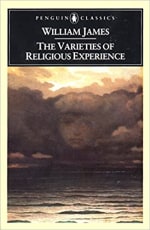

James (1842–1910) is often considered the most important philosopher that America has produced. He is perhaps most famous as the promoter of the philosophy of “pragmatism” founded by his friend Charles S. Peirce (1839–1914). Pragmatism is a many-faceted worldview, one of the central tenets of which is the claim that belief is essentially linked to perception and action and that true beliefs are those that are successful or “useful.”
While James was not himself a conventional religious believer, he was strongly opposed to the “positivism” of his day (what we now call “scientism”), which attempted to discredit religion in the name of science. One of his chief philosophical concerns was to carve out an intellectually respectable public space for religious belief. (For more on this topic, see #8 below.)
James was invited to deliver the prestigious Gifford Lectures for 1901–1902 at the University of Edinburgh in Scotland. Traditionally delivered over two academic years, the lecture series was completed in 1902 and immediately published as The Varieties of Religious Experience.
In this classic book, James describes and analyzes a wide variety of religious phenomena, from the traditional historical (“world”) religions to smaller-scale groups and even reports of individual, personal experiences. He weaves insightful historical, philosophical, and psychological observations on all of these different sorts of religious phenomena throughout this remarkable, one-of-a-kind study.
3.The Protestant Ethic and the Spirit of Capitalism
By: Max Weber , 1905


Weber (1864–1920) was a renowned German jurist, sociologist, political economist, and historian. His influence on the development of the social sciences around the turn of the twentieth century is difficult to exaggerate.
Weber’s famous pair of lectures, “Science as a Vocation” and “Politics as a Vocation”, delivered to the Free Students Union of Bavaria in 1919, provided a touchstone for several generations of budding German professionals in the law, in politics, and in the social sciences.
A principal focus of these lectures—as of much of Weber’s work—was the consequences of Modernity’s “disenchantment of the world” (a phrase he coined), meaning the widespread replacement of the traditional religious vision of mankind’s self-understanding by the modern scientific worldview.
It should be stressed, however, that Weber himself insisted on the appropriateness of the interpretative, or hermeneutic, method, in the human sciences, as opposed to the causal-reductive method of the natural sciences. In this, he followed Wilhelm Dilthey (1833–1911) and his distinction between “understanding” (Verstehen) and “explanation” (Erklären).
The work under consideration here is Weber’s effort to understand the ideological and sociological background of the rise of capitalism in Europe. Specifically, he explores the Calvinist teaching that material prosperity is an outward sign of divine grace, or election, linking this doctrine to the view of industriousness as a prime moral virtue, which Weber saw as the main reason for the extraordinary success of capitalism in northern Europe during the early modern period.
Originally published as Die protestantische Ethik und der Geist des Kapitalismus, this book was first translated into English in 1930 by the distinguished American sociologist, Talcott Parsons (1902–1979). It has been reprinted in numerous later editions.
4.God: A Biography
By: Jack Miles , 1995
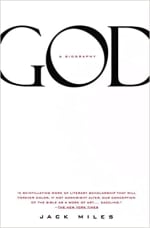

Miles (b. 1942) studied for the Roman Catholic priesthood at Xavier University in Cincinnati, the Pontifical Gregorian University in Rome, and Hebrew University in Jerusalem, but was never ordained. He received his PhD in Near Eastern Languages at Harvard University. In recent years, he has held several academic positions.
Before that, Miles spent most of his career in the publishing industry, working as an editor for Doubleday and University of California Press. He has also been the book review editor for the Los Angeles Times.
Miles has authored four books—beginning with the volume under consideration here—and also edited the Norton Anthology of World Religions (2014).
God: A Biography is the first of a trilogy in which the author explores the concept of God as it is developed in the Jewish, Christian, and Muslim scriptures, respectively. In this book, Miles represents God (Yahweh) as a character in the Hebrew Bible (Old Testament) from a narratological point of view.
5.Killing Jesus: A History
By: Bill O'Reilly and Martin Dugard , 2013


O’Reilly (b. 1949) is a journalist, author, political commentator, and former conservative television talk show host. Dugard (b. 1961) is a professional author.
The book under consideration is the third in a series about the murders of prominent historical individuals, following Killing Lincoln: The Shocking Assassination That Changed America Forever in 2011 and Killing Kennedy: The End of Camelot in 2012. All three books were also adapted into films by the National Geographic Channel.
This book recounts the dramatic events leading to the crucifixion of Jesus Christ—whom the book calls Jesus of Nazareth—as gleaned from the four gospels of the Christian New Testament. It presents the narrative of those events in the form of an accessible suspense thriller.
The authors present their work as ostensibly written from a secular point of view, rather than from a committed Christian perspective. However, while the book was very successful at a popular level—eventually attaining the number one position on the New York Times’s bestseller list—it was heavily criticized by academic reviewers for being historically inaccurate. Some critics accused it of adopting a sectarian, fundamentalist, Protestant viewpoint.
6.God and Sex: What the Bible Really Says
By: Michael Coogan , 2010
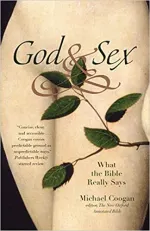

Coogan (b. 1942) is a lecturer on the Hebrew Bible at Harvard Divinity School, as well as Director of Publications for the Harvard Semitic Museum, and editor-in-chief of Oxford Biblical Studies Online.
The author, who is also professor emeritus of religious studies at Stonehill College, has taught at several other colleges and universities, including Fordham, Wellesley, and Boston College. He has also taken part in archaeological excavations in Egypt, Jordan, Israel, and Cyprus.
This book examines the discussions of sexual morality to be found in both the Hebrew Bible and the Christian New Testament. Coogan interprets the relevant passages as not supporting a conservative or traditionalist sexual morality—the usual, default interpretation of Jewish, Christian, and secular scholars alike.
Rather, the author claims that, if properly understood, the said passages support a modern, liberal viewpoint on sexual morality, including acceptance of intercourse and child-bearing outside of marriage, as well as homosexual relationships. The book provoked a good deal of controversy, which closely reflected the political divisions in contemporary American society on these issues.
7.No God but God: The Origins, Evolution, and Future of Islam
By: Reza Aslan , 2005
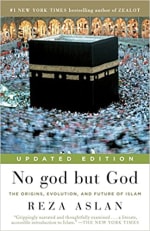

In this book, the author (see #1 above) guides the reader on a tour of Islamic civilization, especially its theology and jurisprudence. The book consists of both historical and topical chapters—including, for example, a chapter on jihad. Aslan’s overall thesis is that Islam is fundamentally consistent with modern liberal political and social principles.
The author acknowledges that his interpretation diverges from the mainstream of Western scholarly opinion. However, he blames the latter on the self-serving attitudes of Western imperialism—which are reminiscent of “orientalism” as propounded by the Palestinian-American literary critic, Edward Said (1935–2003).
Orientalism, in Said’s sense, is the practice of constructing artificial, pseudo-Romanticized images of colonized peoples as exotic “others.” European scholars have repeatedly manufactured such images to help shore up European colonial power.
With respect to Islam, Aslan argues that the orientalist mindset has fostered the misinterpretation of Islamic law (shari’a) as barbaric. This fits in well with the West’s current posture of hostility toward Islam in accordance with the doctrine of the “clash of civilizations” propounded by Samuel P. Huntington (1927–2008) in his 1996 book, The Clash of Civilizations and the Remaking of World Order.
The book has been well received both in the West and in the Islamic world itself (according to reviewer, Reihan Salam).
8.“The Will to Believe”
By: William James , 1896
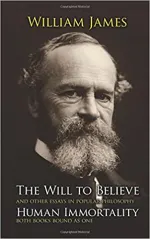

The author (see #2 above) first delivered the lecture entitled “The Will to Believe” in 1896 and it was published in the magazine, The New World, that same year. The lecture was published in book form the following year, in 1897, in the collection, The Will to Believe, and Other Essays in Popular Philosophy.
In his later writings, James changed the name of his main idea in this lecture to “the right to believe,” which he felt was closer to his meaning than “the will to believe.” James pointed out in his lecture and text that human beings must act on incomplete action all the time. Moreover, acting with confidence can improve one’s chances of success compared to acting while lacking confidence in one’s own ability. Putting these two ideas together, James concluded that belief based on incomplete evidence is not only inevitable, but is also positively useful. Therefore, we are fully within our cognitive rights in doing what in any case we cannot help doing and furthermore what is demonstrably useful to us.
Finally, James argued that what applies to our actions in everyday life also applies to our beliefs in the realm of religion. That is, he maintained that our right to believe extends to religious faith, as well.
“The Will to Believe” has been reprinted in numerous later editions.
9.The Phenomenology of Spirit
By: Georg Wilhelm Friedrich Hegel , 1807


Hegel (1770–1831) is one of the most influential philosophers in the great German rationalist tradition. He was the leading light of the philosophical movement known as German Idealism, which arose around the turn of the nineteenth century in reaction to the pioneering thought of Immanuel Kant (1724–1804).
Other prominent German idealists include Hegel’s close friends, the philosopher Friedrich Wilhelm Joseph Schelling (1775–1854) and the poet Friedrich Hölderlin (1770–1843)—roommates from his student days—as well as the Romantic authors, Novalis (Georg Philipp Friedrich von Hardenberg) (1772–1801), Friedrich Schlegel (1772–1829), and others.
In a nutshell, the German idealists accepted Kant’s subjective interpretation of the appearances (the phenomena) as largely constructed by the mind, while rejecting his realistic postulate of an objective order of being behind the appearances and thus beyond the reach of the senses and accessible only to reason (the noumena). In other words, they viewed the phenomena as comprising the whole of reality, which is thus fundamentally mind-like, or ideal, in character.
One of Hegel’s distinctive contributions to the idealistic philosophy was his postulate of “absolute idealism,” or “objective spirit” [objektiver Geist], of which the minds of individual human beings are so many manifestations. This absolute conception of spirit is also conceived of as having a historical dimension, by which Hegel meant that it progresses over the course of cosmic and human history according to the “dialectical” process he famously posited as consisting of a series of threefold stages he called “thesis,” “antithesis,” and “synthesis.”
The book under consideration here contains Hegel’s discussion of several such stages, one of the most important of which is religion. This understanding of the religious experience of mankind as a stage in the development of absolute spirit had a strong influence on later religious thought in the nineteenth century, representing as it did a sort of middle path between traditional Christian theism and scientifically inspired materialistic atheism.
This trend culminated with such thinkers as Edmund Husserl (1859–1938) in Germany, Thomas Henry Green (1836–1882) and F. H. Bradley (1846–1924) in England, and Josiah Royce (1855–1916) in the US. During the twentieth century, both the existentialist movement and the “death of God theology” popular at mid-century had been traced by some scholars to Hegel’s conception of religion.
Originally published as Die Phänomenologie des Geistes in 1807, the book was first translated into English as The Phenomenology of Mind in 1910 by the British moral philosopher, James Black Baillie (1872–1940). This translation has been reprinted in numerous later editions, while many new translations have also appeared, several just in the past few years.
10.The Elementary Forms of Religious Life
By: Émile Durkheim , 1912
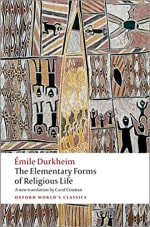

Durkheim (1858–1917) is one of the most important founders of the science of sociology. He was born into an orthodox Jewish family long-established in France. His father, grandfather, and great-grandfather were all rabbis.
The young Émile was given a traditional religious education with a view to his becoming a rabbi in his turn; however, from an early age he took a greater interest in secular philosophy and science. Although Durkheim would go on to write the pioneering effort to understand religion from a scientific point of view under consideration here, he never broke with his faith entirely and always maintained his ties to the Jewish community in France.
Durkheim’s body of work may be divided into two sorts of studies: general philosophical reflections on the nature of social phenomena and the methodology of sociological science (e.g., The Rules of Sociological Method [1893]); and empirical analyses of specific social phenomena (e.g., The Division of Labor in Society [1893], Suicide [1897], the present book].
As a founding father of sociology, Durkheim is perhaps best known for his insistence on the objectivity of the social dimension of reality, pithily expressed in his celebrated maxim: “social facts are things.”
In the book under consideration, the author focuses on the religious beliefs and practices of various communities of first peoples around the world, including the Australian aborigines and the Pueblo Indians of the American Southwest. He concludes that the primary function of religion is to foster group solidarity and cohesion.
More specifically, Durkheim identifies religious entities such as sacred symbols and divinities with the group itself, writing: “So if [the totem animal] is at once the symbol of the god and of the society, is that not because the god and the society are only one?”
Originally published as Les formes élémentaires de la vie religieuse, the book was first translated into English in 1915 by the classical historian, Joseph Ward Swain (1891–1971). It has been reprinted in many later editions. A new translation published in 1995 is linked to above.
11.Encyclopedia of Hinduism
By: Constance Jones and James D. Ryan, 2006
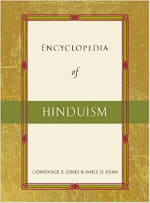

Jones is a sociologist of religion who specializes in the study of offshoots of Hinduism in the West, as well as new religious movements. She has a special interest in the theosophist-mystic spiritual teachers, George Gurdjieff (c. 1870–1949) and Jiddu Krishnamurti (c. 1895–1986).
Ryan is a scholar of Tamil language and literature, as well as an expert on the Tantra tradition of Hinduism, especially, the traditions of Kashmir Shaivism, of Sri Aurobindo (Aurobindo Ghose) (1872–1950), and of Haridas Chaudhuri (1913–1975). He is also interested in Jainism.
Both Jones and Ryan currently teach at the California Institute of Integral Studies, which was founded by Haridas Chaudhuri in San Francisco in 1968.
Their book is organized alphabetically in an encyclopedic fashion. The standard topics for any survey of a world religion—basic concepts, typical practices, important historical events, sacred places, and scriptures—are well covered. The practice of Hinduism in geographical areas outside of South Asia (Bali, East Africa, Trinidad, the US) is also discussed.
Perhaps the most unusual thing about the authors’ approach, however, is that they have devoted about a quarter of the book to biographical entries on some 150 yogis, gurus, teachers, and saints, many of whom are virtually unknown outside of India. One reviewer praised the volume for its abundance of “lesser-known Hindu personalities and concepts that are not adequately covered elsewhere.”
12.Misquoting Jesus: The Story Behind Who Changed the Bible and Why
By: Bart D. Ehrman , 2005
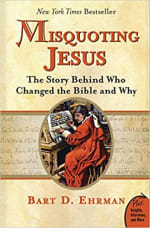

Ehrman (b. 1955) is James A. Gray Distinguished Professor of Religious Studies at the University of North Carolina at Chapel Hill. He is considered one of the world’s foremost scholars of the New Testament.
Ehrman is the highly prolific author of more than 30 books for scholarly or popular audiences. In the book under consideration here, and elsewhere, he has recounted his personal journal from becoming a born-again Christian as a teenager, to evolving into a liberal Christian as a budding religious studies scholar, to arriving at his current position as an atheist as a result of his own application of the method of textual criticism to the New Testament.
Textual criticism—which is the principal methodology taught in academic religious studies departments—involves the application of a wide array of scientific disciplines to the interpretation of religious texts. These disciplines encompass archaeology, ethnology, epigraphy, paleography, and comparative literary genre analysis, among other areas of study.
Ehrman has specialized in applying textual criticism to better understand the origin of the New Testament, the nature of the historical man, Jesus, and the development of early Christian communities.
In this book, Ehrman’s main claim is that the scribes who copied the texts that became the canonical books of the New Testament (the Gospels, the Acts of the Apostles, the Epistles, and Revelations) consciously altered the original texts in order to bring them in line with a more conservative political philosophy than that which taught by Jesus himself. This is especially true with regard to the role of women in Christian societies.
While the author’s work has met with extraordinary acclaim in the academic world, and his textbooks are widely assigned in religious studies courses around the country, some of Ehrman’s volumes, including this one, have met with severe criticism for such things as “having an axe to grind” and lack of originality.
13.Why I Am Not a Muslim
By: Ibn Warraq , 1995
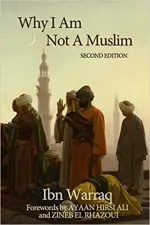

Ibn Warraq (b. 1946) is the pseudonym of an Indian-born, formerly Muslim author. His real identity is unknown.
“Ibn Warraq” is an allusion to the ninth-century religious skeptic, Abū ʿĪsā Muḥammad ibn Hārūn al-Warrāq (889–994 AD). The appellation “Ibn Warraq” has been used as a pen name by many other Arabic authors throughout history who have feared persecution on account of their writings. The name means, roughly, “son of the scribe.”
Ibn Warraq was born into a Kutchi family in what is now the Indian state of Gujarat (Kutchi is a language close to Sindhi). Being Muslims, the family migrated to Pakistan the year after he was born, in 1947, during the chaotic and bloody partition of India into independent, majority-Muslim and majority-Hindu states.
Ibn Warraq has stated that as a young man he studied Arabic on his own with a view to reading the Qurʼān. His grandmother wished him to study at a madrasa, but his father preferred to send him to a boarding school in England. Later, Ibn Warraq studied Arabic language and philosophy at the University of Edinburgh with the celebrated scholar of Arabic history and culture, W. Montgomery Watt (1909–2006).
After leaving university, Ibn Warraq taught primary school in London for five years. He then moved with his wife to France, where he operated a restaurant for a time and worked at odd jobs. He has stated it was the “Rushdie affair” in 1989 that jolted his life onto a different track.
Salman Rushdie (b. 1947) is an Indian-born author whose 1988 novel, The Satanic Verses, was deemed blasphemous by many pious Muslims. The ensuing international outcry led many Muslim countries to ban the book and culminated in a religious edict (fatwā) that was issued the following year by the Iranian leader, Ruhollah Khomeini (1900–1989), which put a price on Rushdie’s head. As a result, Rushdie was forced to go underground, living for several years with around-the-clock police protection.
Ibn Warraq says these events caused him to question his own religious beliefs, and ultimately led him to write the book under consideration here—his first. He has since written eight more books on Islam and its confrontation with the West.
The title, Why I Am Not a Muslim, alludes to the 1927 essay, “Why I Am Not a Christian,” by the famous English philosopher, Bertrand Russell (1872–1970). The book is a full-frontal attack on Islam, both as a religion and as a political culture. In addition to garden-variety arguments against the truth of Islamic doctrinal claims (which might be applied just as well to other religions), it contains sweeping judgments of the fundamental incompatibility of Islamic civilization with Western-style individual rights and liberal democracy.
The book was widely reviewed and largely approved of by European critics. However, more than a few reviewers and other commentators have taken the author to task, both for his overly polemical tone and for failing to distinguish between mainstream Islam and Islamism (Islamic fundamentalism and political extremism).
A second edition of Why I Am Not a Muslim was published in 2020.
14.The World’s Religions
By: Huston C. Smith, 1958
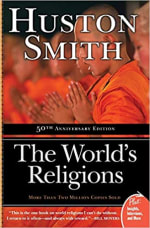

Smith (1919–2016) was often regarded as the doyen of religious studies in the US. He was born in China to American Christian missionary parents and spent his first 17 years in that country.
Smith traveled to the US for his higher education, receiving his bachelor’s degree from Central Methodist University in Fayette, Missouri, in 1940, and his Ph.D. in philosophy from the University of Chicago in 1945.
Smith specialized in the study of Vedanta (Hinduism), Zen (Buddhism), and Sufism (Islam), but eventually developed expertise in all of the world’s principal religious traditions. During his long career, he taught at several prestigious universities, including Washington University in St. Louis, MIT, Syracuse, and UC-Berkeley.
Originally published in 1958 as The Religions of Man, The World’s Religions has long been the most-popular, one-volume survey of the principal world religions on the market. It is widely assigned as a required text in religious studies courses around the country.
The volume devotes one chapter each to Hinduism, Buddhism, Confucianism, Daoism, Islam, Judaism, and Christianity, as well as what he calls “primal religions” (i.e., the religions of first peoples around the world).
The book has been reprinted numerous times, most recently in 2009.
15.The Power of Now: A Guide to Spiritual Enlightenment
By: Eckhart Tolle , 1997
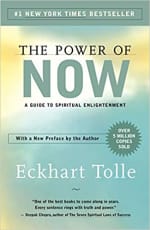

Tolle (b. 1948) was born Ulrich Tölle in a small Ruhr Valley town in Germany. He has stated that he was an unhappy child, whose parents did not get along, who was bullied at school, and who had to play among the bombed-out ruins of post-war Germany—a constant reminder of the suffering and devastation caused by the abominable war which had ended just before his birth.
After his parents divorced, Tolle’s father moved to Spain, where the young Ulrich came to join him. However, he did not attend high school, but began to study intensively on his own, especially literature, various languages, and astronomy.
When he was 19, Tolle moved to London, where he taught German and Spanish for three years at a language institute. Next, he matriculated at the University of London, where he studied philosophy, psychology, and literature, eventually taking a bachelor’s degree. He then enrolled in a PhD program at Cambridge University, but eventually dropped out.
Tolle has written that during this period of his life he suffered “almost unbearably” from anxiety, fear, and depression and that he was basically searching for answers to problems of a religious or spiritual nature regarding the purpose and meaning of life.
All of this changed one night in 1977, when he was 29 years old. During that night he experienced an epiphany, or inner transformation, which he later understood to be the obliteration of his conscious self, leaving only his pure “presence” or being. He had attained a “miraculous” sense of deep peace in which the past and future no longer existed, and his pure presence merely observed the world in the present moment without desire or judgment.
Tolle spent the next several years sleeping on the ground or on park benches, while living in a state of “deep bliss.” To others, including his family, he appeared to be an irresponsible “bum” or even insane. During this period, he changed his first name from Ulrich to Eckhart as an homage to the great medieval German mystic, Meister Eckhart (c. 1260–c. 1328), better known as “Meister Eckhart” [Master Eckhart].
Meanwhile, some students Tolle had taught during his stay at Cambridge began to hear about his transformation. Gradually, they began to seek him out. In this way, he began to work as a counsellor and spiritual teacher.
In 1995, Tolle moved to Vancouver, British Columbia, in Canada. Two years later, he published his first book, The Power of Now, in a small print run of only 3000. Unexpectedly, the book became a bestseller, eventually leading to Tolle’s becoming a major player in the burgeoning “mindfulness” movement of New Age spirituality.
In the years since 1997, Tolle has published four more books following up on The Power of Now, a children’s book on mindfulness, a graphic novel, and five DVDs.
Reprinted in 2004, The Power of Nowt has been translated into at least 33 languages and has sold over three million copies in North America alone.
16.The Myth of Persecution: How Early Christians Invented a Story of Martyrdom
By: Candida Moss , 2013
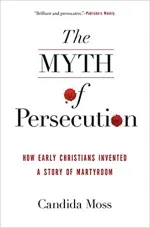

Moss (b. 1978) is a British-born religious studies scholar who is currently Edward Cadbury Professor of Theology at the University of Birmingham. She specializes in New Testament studies.
This book claims that (1) persecution and martyrdom of Christians by Roman and Jewish governmental and religious officials provided a rallying point against the outside world and thus were a unifying factor within the early Church, and (2) martyrs were accorded high social prestige among early Christian communities. For these reasons, the author claims that early Christians were motivated to grossly exaggerate their accounts of persecution and martyrdom.
For example, Moss claims that—in contrast to the common perception of Roman authorities’ long-standing hostility towards Christianity—the persecution of early Christians was a matter of official Roman imperial policy during a brief period of only 12 years.
In conclusion, she maintains that most early Christian narratives about martyrdom are untrustworthy and so should not be taken at face value. The book has been both widely reviewed and is highly controversial. One of the main complaints of critics has been that Moss’s thesis is exaggerated and that the author is ideologically driven.
17.The Revelation of John: A Narrative Commentary
By: James L. Resseguie , 2009
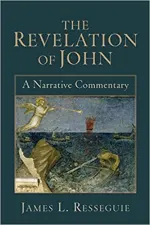

Resseguie (b. 1945) is currently J. Russell Bucher Chair of New Testament at Winebrenner Theological Seminary in Findlay, Ohio. Resseguie holds an MDiv (1972) from Princeton Theological Seminary and a PhD (1978) from Fuller Theological Seminary in Pasadena, California. He is an ordained minister of the Presbyterian Church (USA).
Resseguie had published four academic volumes prior to the one under consideration here, all investigating different aspects of the New Testament from the methodological perspective known as “narrative criticism” or “narratology.” This hermeneutic method encompasses such critical perspectives as “defamiliarization,” literary “point-of-view” analysis, and “reader-response” theory.
In this book, the author applies his narratological methodology to the book of Revelation. Proceeding through the text line by line, Resseguie emphasizes such literary factors as rhetoric, style, symbolism, plot, setting, point of view, and characterization, all with a view to teasing out the text’s meaning(s) and increasing the reader’s overall understanding.
This book is both scholarly and accessible. As such, it is suitable for academics, pastors, students, and lay readers.
18.A New Earth: Awakening to Your Life’s Purpose
By: Eckhart Tolle , 2005
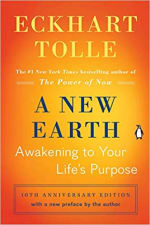

Tolle published this book eight years after his breakthrough work, The Power of Now (see #15 above), originally released in 1997.
In his new book, Tolle first reprises many of his claims from his earlier book, to wit, that individuals can achieve bliss and deep inner peace by letting go of conflicts from the past, as well as anxieties and desires for the future, concentrating their pure presence, or being, on the calm and disinterested contemplation of the world in the present moment. Tolle then goes on to expand his field of vision from the troubled individual consciousness to the suffering collective consciousness of the world as a whole.
Finally, he shows how the practice of mindfulness can help us to overcome, not just our own individual distress and unhappiness, but also such negative, other-directed emotions as envy, jealously, resentment, anger, and fear. Why is that important? Because once these negative, other-directed emotions have been defeated, the practice of mindfulness can begin to spread, allowing the whole planet to initiate the process of psychic healing.
19.Unifying Hinduism: Philosophy and Identity in Indian Intellectual History
By: Andrew J. Nicholson, 2010
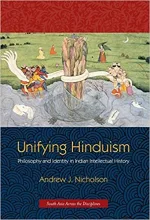

Andrew J. Nicholson is currently Associate Professor of Hinduism and Indian Intellectual History at the State University of New York (SUNY) at Stony Brook (AKA Stony Brook University).
This book explores the historical roots of the concept of “Hinduism,” understood as a unified set of beliefs and practices common to all the manifold and highly diverse religions and philosophies native to the Indian subcontinent.
In addition, the book has an important meta-level, historiographic purpose. Namely, the author attempts to delineate a middle path between European “post-colonial” theorists who claim that Hinduism is an artificial belief system “constructed” by nineteenth-century Western “orientalist” scholars, on the one hand, and some contemporary Indian scholars who insist that Hinduism’s roots extend back to the origins of civilization itself, on the other.
More specifically, Nicholson reviews the thought of a number of Indian scholars from the fourteenth through the seventeenth centuries who saw the various traditional religious and philosophical systems of the subcontinent—including Vedanta, Samkhya, and Yoga, as well as the cults of Vishnu, Shiva, and Shakti—as comprising a single system of beliefs and practices. In poetic terms, these scholars liked to speak of these systems as so many rivers flowing into the one great ocean of Brahman (ultimate reality).
In addition, Nicholson sees these medieval and early modern scholars as portraying Vedanta as a unifying factor binding together all the diverse Indian traditions. Moreover, he claims their work paved the way for modern advocates of the ultimate unity of all world religions, notably Swami Vivekananda (Narendranath Datta) (1863–1902), Mohandas K. “Mahatma” Gandhi (1869–1948), and Sarvepalli Radhakrishnan (1888–1975).
Finally, Nicholson criticizes the way in which European philosophical conceptual dualities—such as monism/dualism, realism/idealism, theism/atheism, and orthodoxy/heterodoxy—have distorted modern academic discourse concerning Indian religions and philosophies.
20.Kali’s Child: The Mystical and the Erotic in the Life and Teachings of Ramakrishna
By: Jeffrey J. Kripal , 1995
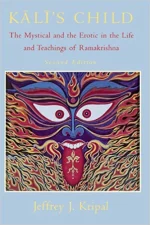

Kripal (b. 1962) is currently the J. Newton Rayzor Chair in Philosophy and Religious Thought at Rice University in Houston, Texas. Kripal has authored nine academic and popular books (including the one under consideration here), co-edited five academic volumes, and authored numerous academic papers.
Kali’s Child is a biographical study of the Bengali mystic and saint, Ramakrishna (Gadadhar Chattopadhyaya) (1836–1886). Based on Kripal’s PhD dissertation written at the University of Chicago under the supervision of famed Indologist, Wendy Doniger (b. 1940), the book draws putative conceptual links between the beliefs and practices of tantrism as practiced by Ramakrishna and those of Western psychoanalysis.
In summary, the book is primarily aimed at supporting the author’s basic contention that Ramakrishna’s teaching embodies a deep connection between human sexuality and mystical experience.
Initially, Kali’s Child was met with praise by Western religious studies scholars. However, Ramakrishna’s followers in India soon voiced angry attacks on the book for what they viewed as its heretical interpretation of their saint’s life and work. They raised a storm of high-profile controversy among Indian public intellectuals, government officials, and others. Efforts were even made to pressure the Parliament of India to ban the book; however, the efforts failed.
European and Indian scholars also weighed in on the heated public controversy. In 1998, the author published a revised edition containing several responses to his academic critics.
21.Pagan Theology: Paganism as a World Religion
By: Michael York , 2003
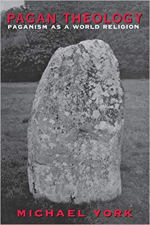

York (born c. 1939) is an American-born religious studies scholar specializing in pagan and nature religions. He is currently professor emeritus in the Department of Theology and Religious History at Cherry Hill Seminary in Columbia, South Carolina.
York received his bachelor’s degree (1961) from the University of California, Santa Barbara, his master’s degree (1970) from San Francisco State University, and his PhD (1992) from King’s College, University of London. He has also studied in Germany and India.
The book under consideration here is an ambitious attempt to revise the terms under which modern scholars discuss the religions of the extinct as well as the extant religions of indigenous or “first” peoples. As examples of extinct religions, one may mention the Druidic religions of Neolithic Europe; extant nature religions include Daoism in China and Shintoism in Japan. (Note that neo-pagan religions such as modern Druidism and Wicca constitute a distinct historical phenomenon.)
York’s main thesis is that the common elements among the various polytheist, animist, and nature religions of the world justify our classifying them under a single common category, for which he proposes the term “pagan theology.” York views pagan theology as the “root religion” of humankind.
Pagan Theology was met with controversy within the relatively small world of academics who study indigenous and nature religions. The main objection was that York’s proposed single category elides too many important distinctions among the various religions. A secondary objection was to the term “pagan theology” itself, seeing that the word “pagan” was originally used by early Christians in a pejorative sense to describe the indigenous beliefs of the Greeks and Romans.
22.Combating Cult Mind Control: The #1 Best-selling Guide to Protection, Rescue, and Recovery from Destructive Cults
By: Steven Hassan , 1988


Hassan (b. 1954) is a licensed mental health counselor. He holds a PhD from Fielding Graduate University in Santa Barbara, California.
When he was only 19 years old, Hassan became a convert to the Seoul, South Korea–based Unification Church founded by the Sun Myung Moon (1920–2012). Hassan spent two years as an active member of the church, recruiting and indoctrinating new members, as well as engaging in fundraising activities.
In time, he came to feel that the psychological techniques that he was taught to use on new recruits—which had been used on him—were coercive and unethical. He dropped out of the Unification movement and later became involved in efforts to help others to exit what he considered to be destructive cults.
Initially, Hassan set about studying a number of well-known psychologists who have written on the subject of mind control and psychological coercion, including Gregory Bateson (1904–1980), Leon Festinger (1919–1989), Margaret Singer (1921–2003), and Robert Jay Lifton (b. 1926), among others.
In the wake of the 1979 Jonestown massacre, Hassan founded the organization, Ex-Moon, Inc., to attempt to develop a more structured approach to helping people to exit cults. Today, he runs the website, Freedom of Mind Resource Center.
In this book, the author explores many of the psychological principles relevant to mind control which were developed by the scholars noted above. He then explains in detail and based on his own experience how these principles can help families, friends, and counselors to “deprogram” cult converts.
Hassan has also authored three other books on the subject on mind control in addition to the one under consideration here. The book was reissued in 1990 with the subtitle, “The #1 Best-selling Guide to Protection, Rescue, and Recovery from Destructive Cults.” In 2015, it was republished in a revised, 25th-anniversary edition.
23.Jesus, Interrupted: Revealing the Hidden Contradictions in the Bible (and Why We Don’t Know About Them)
By: Bart D. Ehrman , 2009


Ehrman is one of the world’s most prolific and high-profile religious studies scholars specializing in early Christianity (see #12 above).
In this book, the author provides a personal narrative of the development of his own religious beliefs as a function of his advancing understanding of academic biblical studies. He then transitions to an overview of many of the various intellectual issues raised by scholarly analysis of the Bible.
Ehrman’s tone and basic approach are not solely “academic.” Rather, he regards it as morally incumbent on everyone—believers and non-believers alike—to seek the truth about the nature and career of Jesus, and thus of approaching the gospels and the New Testament as a whole by means of the methodology he recommends.
The reason he cites for this attitude is the following: “The Bible is the most significant book in the history of our civilization. Coming to understand what it actually is, and is not, is one of the most important intellectual endeavors that anyone in our society can embark upon.”
Ehrman’s skepticism regarding traditional literalist interpretations of the gospels and Jesus is already signaled by the book’s title and subtitle.
24.The Jesus Dynasty: The Hidden History of Jesus, His Royal Family, and the Birth of Christianity
By: James Tabor , 2006
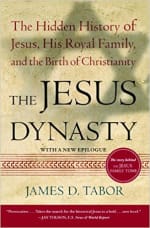

Tabor (b. 1946) is currently Professor of Ancient Judaism and Early Christianity in the Department of Religious Studies at the University of North Carolina at Charlotte. He has previously taught at Pepperdine University, the University of Notre Dame, the College of William and Mary, and elsewhere.
Tabor has published seven books (including the one under consideration here), mostly on early Christianity, for academic and popular audiences.
This book advances the thesis that the movement centered on the man, Jesus of Nazareth (c. 4 BC–c. 30 AD) should be understood in terms of a rivalry for the kingship of Judea and Galilee between the dynasty of King David (reigned c. 1010–970 BC) and the Herodian dynasty of Jesus’s time.
Tabor begins by pointing out that Jesus had excellent credentials to represent the house of David by virtue of his royal lineage, acquired through his parents, Mary and Joseph. This much is, of course, well known and widely accepted.
However, Tabor goes a step farther, arguing that Jesus would have been viewed by many at that time as a more legitimate contender for the throne than the son of Herod the Great (c. 72–c. 1 BC)—Herod Antipas (before 20 BC–after 39 AD)—the king familiar from the passion narratives of the gospels.
In short, Tabor maintains that the events recounted in the gospels, and the New Testament more generally, are best understood in the light of the dynastic rivalry between the houses of David and Herod.
25.The Essence of Christianity
By: Ludwig Feuerbach , 1841


Feuerbach (1804–1872) was an influential German philosopher who is often seen as a bridge between Hegel and a host of famous materialist philosophers who appeared later in the nineteenth century, including Charles Darwin (1809–1882), Karl Marx (1818–1883), Friedrich Nietzsche (1844–1900), and Sigmund Freud (1856–1939).
Feuerbach originally studied at the University of Heidelberg with a view to a career in the Lutheran clergy. However, he transferred to the University of Berlin in 1824 in order to study with G.W.F. Hegel (see #9 above).
Eventually, Feuerbach transferred his allegiance to a group of radical young philosophers known collectively as the “Young Hegelians.” They interpreted Hegel’s “dialectical” march of Geist [Spirit] through cosmic and human history as the “overcoming” of existing Western cultural institutions, above all, the Lutheran church and the Prussian state.
Feuerbach was prolific, with some 15 dense academic tomes to his credit, including the one under consideration here. His career was capped with all the highest marks of mainstream German academic recognition, including an edition of his collected works in ten volumes published between 1846 and 1866 and several volumes of his correspondence published during the 1870s. However, this book—originally published as Das Wesen des Christenthums—is undoubtedly the work for which he is best known.
In it, the author argues that the concept of God represents mankind’s consciousness of the infinite and is a projection of the human mind intended to fulfill human psychological needs, with each aspect of the divine nature corresponding to some feature or need of human nature.
The book was translated into English in 1854 by Mary Ann Evans (1818–1880), better known under her pen name, “George Eliot,” which she adopted upon the publication of her first great novel, Adam Bede, in 1859.
Interested in truly diving into the religious studies discipline? Start by checking out the Most Influential Schools in the Field of Religious Studies over the last 20 years!
Get more study tips, learning tools, and study starters with a look out our Complete Library of Study Guides.
Or jump to our student resource library for tips on everything from studying to starting on your career path.